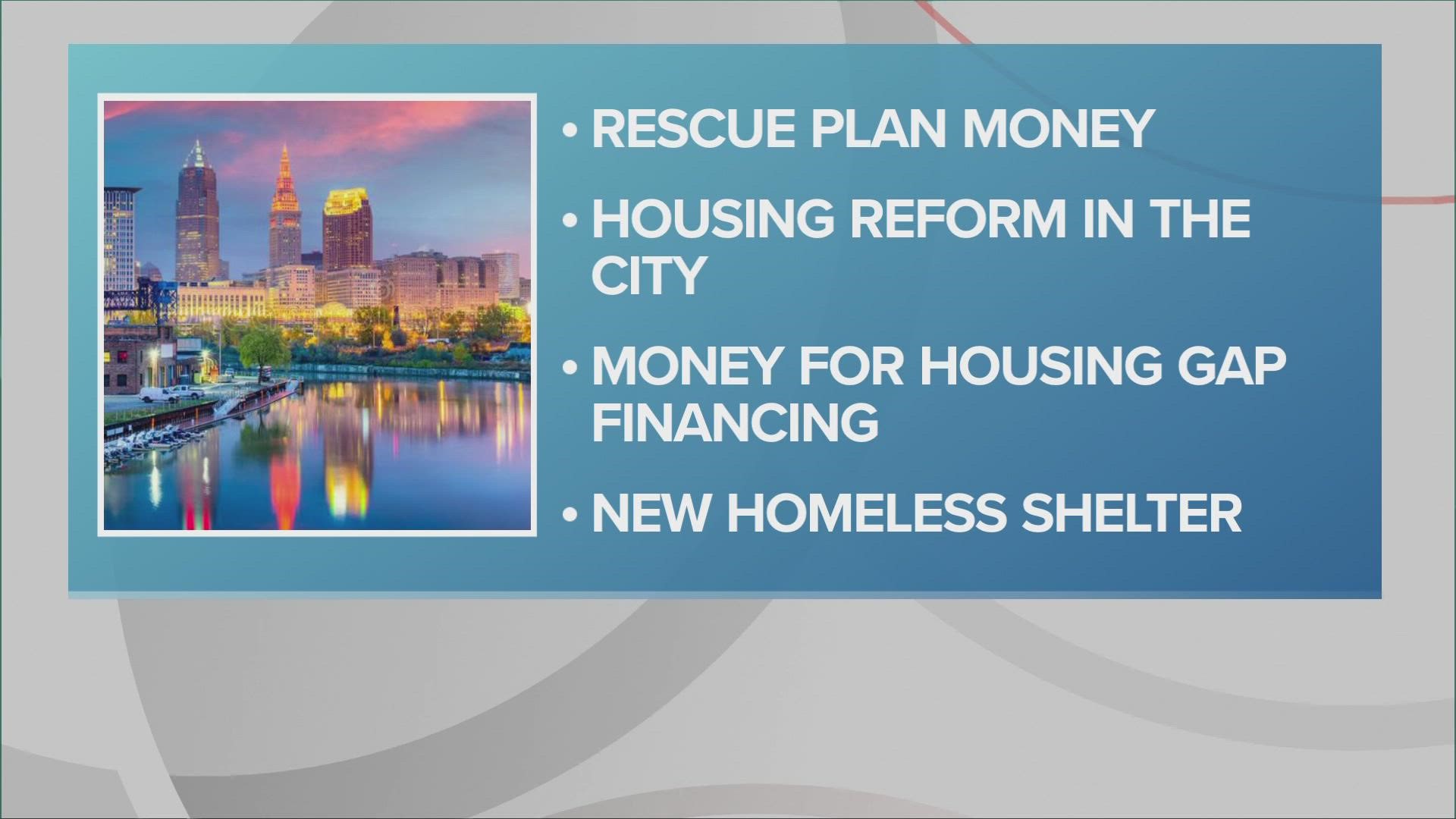CLEVELAND — Cleveland City Council approved more than $50 million in funding from the American Rescue Plan Act to be used to help address housing reform in the city during its meeting on Monday.
Council passed legislation to utilize $35 million in ARPA money for the "Housing Gap Financing Fund" to help "incentivize the renovation and construction" of affordable, workforce housing projects, mixed-income, and market rate projects.
Approximately $25 million of the ARPA funding will be invested in affordable housing, with another $10 million going to market rate housing projects. According to city documents, $5 million will be allocated to the Woodhill Homes project.
The $35 million for the "Housing Gap Financing Fund" is part of Mayor Justin Bibb's plan to spend $102 million in ARPA funds for 15 separate initiatives, including "Housing for All." Bibb has also called for $10 million to be spent on a home repair fund and $5 million for a revolving loan pool to provide low-interest capital for small, mostly minority contractors seeking to rehab structures not covered by private banks.
Council also approved the receipt of a $17.7 million grant from the U.S. Department of Housing and Urban Development. The goal of the HOME-ARPA grant is to address homelessness through the development of affordable housing and non-congregate shelters.
The funds can be used for four eligible activities:
- Production or preservation of affordable housing
- Tenant-based rental assistance
- Supportive services, homeless prevention services, and housing counseling
- Purchase and development of non-congregate shelter
According to the city's plan, $13.7 million will be allocated for 250 "affordable housing units," with the remaining $4 million to be spent for a new homeless shelter.
Council also approved legislation calling for $3 million in ARPA funds to be used to create the "Transformative Public Art Projects Fund Program." The fund will "stimulate capital investments in Cleveland's neighborhoods by providing grants for transformative arts projects with capital needs." This allocation was also part of Bibb's plan under the "arts and neighborhood amenities" initiative.
Previous Reporting:

